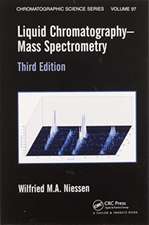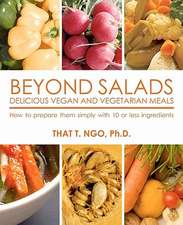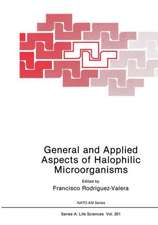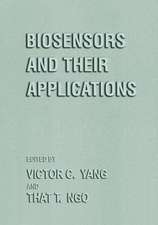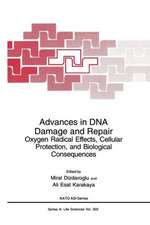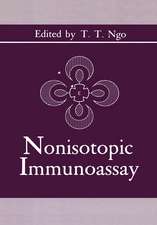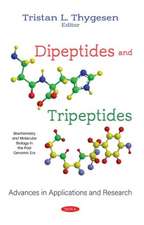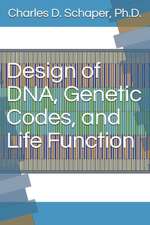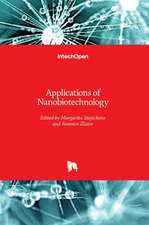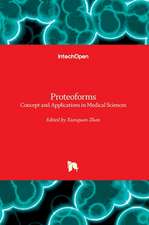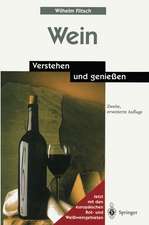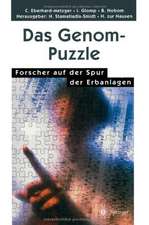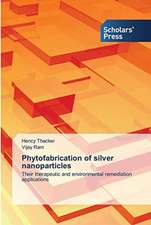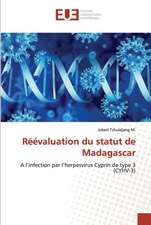Enzyme-Mediated Immunoassay
Editat de H.M. Lenhoff, That T. Ngoen Limba Engleză Paperback – 13 mar 2012
Preț: 403.91 lei
Nou
Puncte Express: 606
Preț estimativ în valută:
77.30€ • 79.85$ • 64.33£
77.30€ • 79.85$ • 64.33£
Carte tipărită la comandă
Livrare economică 26 martie-09 aprilie
Preluare comenzi: 021 569.72.76
Specificații
ISBN-13: 9781468450149
ISBN-10: 146845014X
Pagini: 500
Ilustrații: 498 p.
Dimensiuni: 170 x 244 x 26 mm
Greutate: 0.79 kg
Ediția:Softcover reprint of the original 1st ed. 1985
Editura: Springer Us
Colecția Springer
Locul publicării:New York, NY, United States
ISBN-10: 146845014X
Pagini: 500
Ilustrații: 498 p.
Dimensiuni: 170 x 244 x 26 mm
Greutate: 0.79 kg
Ediția:Softcover reprint of the original 1st ed. 1985
Editura: Springer Us
Colecția Springer
Locul publicării:New York, NY, United States
Public țintă
ResearchCuprins
Enzyme Mediated Immunoassay: An Overview.- Separation-Free (Homogeneous) Enzyme Mediated Immunoassays.- Separation-Free Enzyme Immunoassay for Haptens.- Enzyme Modulator as Label in Separation-Free Immunoassays: Enzyme Modulator Mediated Immunoassay (EMMIA).- Prosthetic Group Labeled Enzyme Immunoassay.- Fluorogenic Substrate Labeled Separation-Free Enzyme Mediated Immunoassays for Haptens and Macromolecules.- Immunoassays Based on Conformational Restriction of the Enzyme Label Induced by the Antibody.- Nonseparation Enzyme Immunoassays for Macromolecules.- Liposome-Entrapped Enzyme Mediated Immunoassays.- Test Strip Enzyme Immunoassay.- Separation-Free Enzyme Fluorescence Immunoassay by Continuous Flow Injection Analysis.- Seperation-Required (Heterogenous) Enzyme Immunoassay.- Separation-Required (Heterogeneous) Enzyme Immunoassay for Haptens and Antigens.- Enzyme Immunoassay of Antibody.- The Amplified Enzyme-Linked Immunosorbent Assay (a-ELISA).- Affinity Column Mediated Immunoenzymetric Assays.- Steric Hindrance Enzyme Immunoassay (SHEIA).- Maleimide Derivative of Hapten for Enzyme Coupling in EIA.- Enzyme Immunoassay Using Tagged Enzyme-Ligand Conjugates.- Fluorimetric Measurements in Enzyme Immunoassays.- Radial Partition Enzyme Immunoassay.- Development of Immunochemical Enzyme Assays for Cardiac Isoenzymes.- Enzyme-Linked Immunoelectrotransfer Blot (EITB).- Enzyme Immunoassays for Tropical Parasitic Diseases.- Monoclonal Antibodies in Immunoenzymetric Assays.- The Ngo-Lenhoff (MBTH-DMAB) Peroxidase Assay.- Immunoperoxidase Techniques Using the Avidin-Biotin System.- Contributors.

